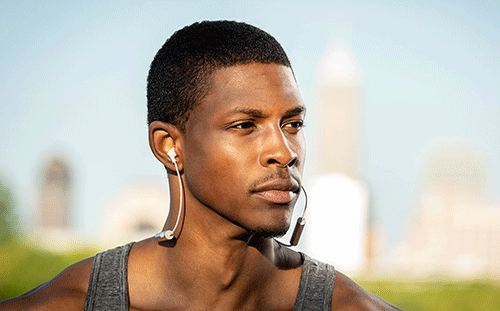Many people, especially young people, tend to spend many hours listening to music, movies and shows or other entertainment on their phones through earphones or headphones.
Earphones are devices that are worn on the pinna or the internal part of the ear. These devices are also referred to as earbuds, in-ears, canal phones, buds, in-ear headphones, or in-ear monitors. Also known as ear speakers, headphones, on the other hand, are equipment worn on or around the ear.
Many youngsters, however, tend to listen to such entertainment with the volume too high and for too long, risking the loss of hearing.
In efforts to prevent hearing loss, the World Health Organisation (WHO) has designated 3 March annually as
World Hearing Day.
The commemoration aims to promote ear and hearing care worldwide and raise awareness of how to prevent deafness and hearing loss.
The 2023 theme is ‘Ear and hearing care for all!’ and speaks to policymakers on the need to focus on ensuring access to ear and hearing care services to all who need it, as an essential health service.
What many fail to acknowledge is that listening to loud sounds can lead to noise-induced hearing loss or ringing in the ear (tinnitus).
One could also be at risk of noise-induced hearing loss if one regularly works in a noisy place, or visit places with amplified music e.g., nightclubs, concerts, or fitness classes.
To mark World Hearing Day, the Ear Institute, with branches throughout Namibia and South Africa, is calling on individuals to take simple steps to protect their hearing, including avoiding exposure to loud noise, seeking medical attention for hearing problems, and wearing ear protection when necessary.
“It’s never too early or too late to start looking after your health,” said Nico van der Merwe, founder of the Ear Institute. “By taking simple steps and seeking medical attention when necessary, individuals can maintain their hearing and reduce the risk of related health problems.”
According to a study published late last year by the peer-reviewed medical trade journal BMJ Global Health, an estimated 0.67 to 1.35 billion individuals aged 12-34 years worldwide are likely to engage in unsafe listening practices.
Lead study author Lauren Dillard was quoted as saying exposure to sound at too high a volume can fatigue the sensory cells and structures in the ear.
“If that goes on for too long, they can become permanently damaged, resulting in hearing loss, tinnitus or both,” explained Dillard, a consultant to the WHO and a postdoctoral fellow at the Medical University of South Carolina.
Noise-induced hearing loss is permanent and cannot be reversed.
However, people with hearing loss can benefit from hearing devices and rehabilitation services.
But, noise-induced hearing loss can be prevented through safe listening practices, such as turning the volume down. That way one can listen for longer without harming one’s hearing.
If you are one of those at risk or know someone at risk of hearing loss due to unsafe listening, here are some tips for safe listening:
– Set your device’s volume level to no more than 60% of maximum. Use well fitted, and noise cancelling headphones.
– Wear earplugs in noisy places and/or move away from sources of sound, such as loudspeakers
– Limit time spent engaged in noisy activities and limit daily use of personal audio devices
– Use apps to monitor your sound exposure by choosing devices with built-in safe listening features.
Heed the warning signs and contact a doctor if you have: persistent ringing in the ear (tinnitus), difficulties hearing high-pitched sounds or following conversations.
Get regular hearing checks and self-check your hearing using apps such as hearWHO and seek professional advice if you fail the hearing check or have signs of hearing loss.
Once you lose your hearing, it will not come back. Make Listening Safe!
– Additional information by Namibia Medical Care


